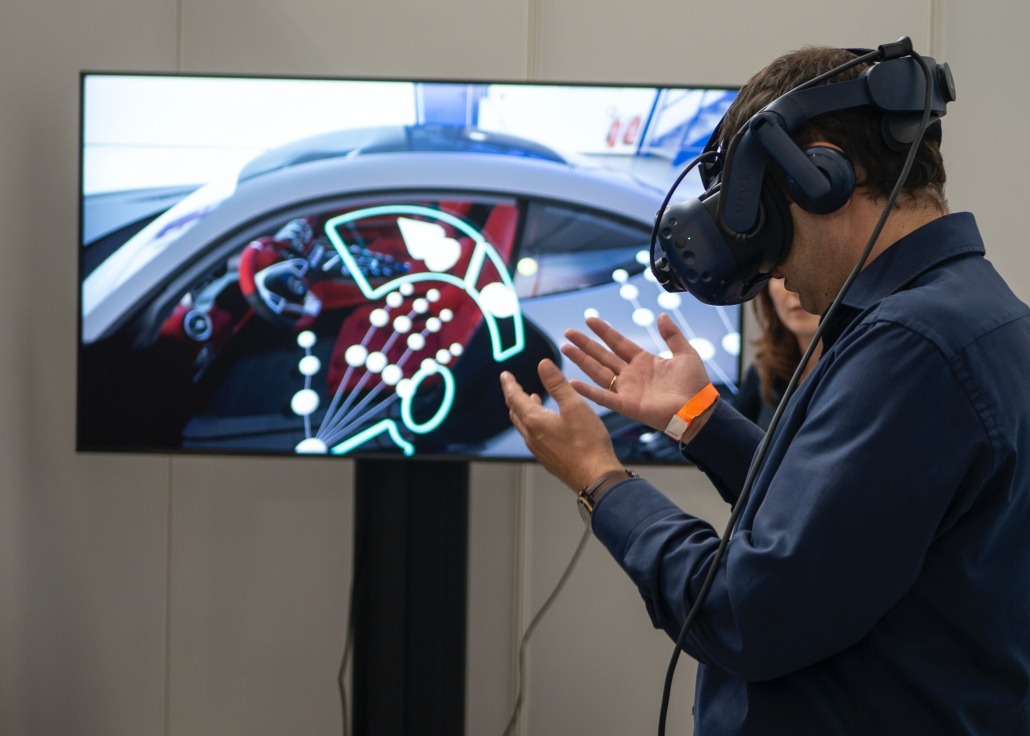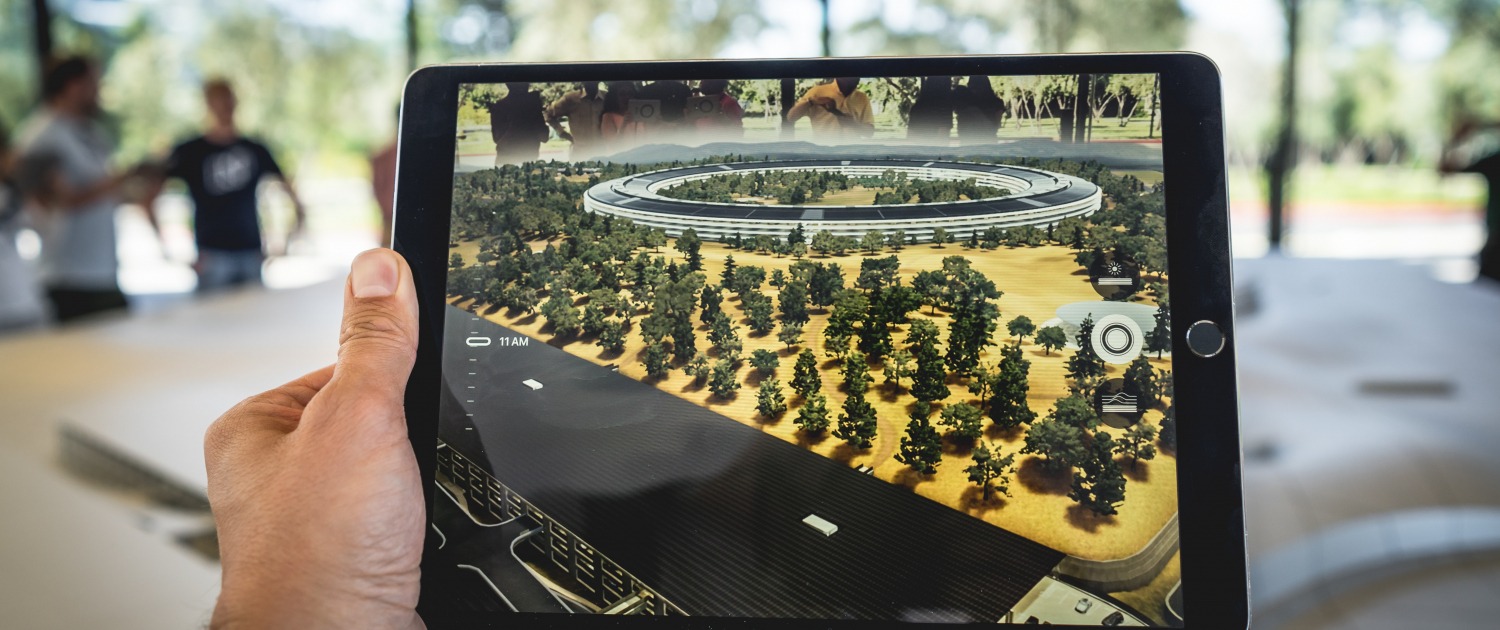AR vs. VR: Differences and Business Applications
Did you ever consider what distinguishes augmented reality from virtual reality? While both technologies are revolutionizing the way we interact with digital information, they exist for very different purposes. Let’s examine what distinguishes each and how businesses are using these technologies today.
The Real vs. Virtual World Spectrum

Augmented Reality (AR) enhances your real world by laying digital information on top of the world you can already see. Think about Pokémon GO placing virtual monsters in your local park or the IKEA app overlaying how that new sofa would work in your sitting room. Your real world stays at the bottom, just with some digital augmentations.
Virtual Reality (VR), however, transports you somewhere entirely different. When you have a VR headset on, you’re completely immersed in a virtual world, whether that is on the ocean floor, inside a home that hasn’t yet been built, or battling dragons in an imaginary realm.
How They Work: The Tech Behind the Magic
AR technology works by using cameras, sensors, and sophisticated computer vision algorithms to understand your environment before adding digital elements to it. Most of us already have AR-capable devices in our pockets—smartphones and tablets can run AR apps without additional hardware, though specialized AR glasses like Microsoft’s HoloLens offer more advanced capabilities.
VR requires more dedicated hardware. Typical VR setup includes a headset covering the real world, controllers to enable you to touch virtual objects, and sometimes additional sensors to track your movements. The technology creates a fully synthetic environment responding to your actions in real-time, creating that feeling of “presence” that allows VR to be so compelling.
Where Businesses Are Finding Value
Augmented Reality in Business
Retailers are embracing AR to reduce return rates and gain customer confidence. Virtual try-on technology for everything from eyeglasses to cosmetics to clothing allows consumers to make more savvy purchasing decisions. Home improvement stores, including Lowe’s and Home Depot, offer AR apps that help customers measure rooms and view products at home before buying.
AR is also earning its keep in manufacturing and logistics by being helpful in training and operations. AR glasses can be put on workers and get step-by-step visual instructions superimposed right on equipment they are repairing, reducing training time and error. Workers in the warehouse use AR navigation to find products more quickly, directions showing up right in front of their eyes.
Medical personnel are using AR during complex procedures, with vital information and imagery projected directly in front of them. Surgeons can see patient vitals or pre-operative imaging without needing to take their eyes off the field, and medical students are able to visualize anatomy like never before.
Virtual Reality in Business
Training classes have been transformed by VR, particularly for high-risk or rarely occurring scenarios. Pilots of commercial airliners can practice emergency maneuvers without risking anyone’s safety. Surgeons can rehearse complex operations on virtual patients. Factory employees can practice operating hazardous equipment without risk. The experience in VR builds up muscle memory and emotional responses similar to real scenarios.
Real estate and architecture firms use VR to walk clients through houses and buildings that may be thousands of miles away or that have yet to be built. Many VR platforms, including those used in entertainment and training, rely on specialized software systems to create these immersive walkthroughs. Potential buyers can view homes from where they are, and architects and clients can stroll through designs together, flagging issues before construction begins.
The remote work revolution has created demand for VR meeting rooms, in which employees can gather to meet in virtual meeting rooms superior to video meetings. Virtual spaces are spatially sound (the voices originate from the direction of the speaker) and allow one to collaborate on 3D models or documents.
Benefits That Drive Adoption
AR’s context-aware integration makes it particularly worth it in environments where remembering what is nearby is most important. It reduces cognitive load by putting information where you need it, and being able to integrate with existing devices often means reduced cost of implementation.
VR’s complete immersion causes emotional responses and memory building that’s exponentially more powerful than usual learning processes. VR arcades often demonstrate this through their VR game libraries, which are designed to maximize engagement and emotional impact. Studies always show higher retention with VR instruction compared to video or text-based instruction. For businesses, VR has the potential to drastically reduce travel costs by bringing individuals together in virtual space for meetings, training, or property tours.
Bouncing Over the Potential Disadvantages
They have their disadvantages. Prolonged use of VR can cause “simulator sickness” in some users—a form of motion sickness occurring when visual and physical perceptions do not match. Both technologies can cause eye strain and body discomfort after extended use.
Privacy is a concern, especially for AR applications that are continually scanning real environments. Companies need to have open data policies and need to exercise caution about what information their applications capture with cameras and sensors.
Accessibility is an issue—cheaper high-end VR equipment remains relatively expensive, and both of these technologies lack full support for users with particular disabilities.
Choosing the Right Technology for Your Purpose
Choosing between AR and VR is based on what you are trying to accomplish:
Use AR when:
- You need to remain sensitive to your surroundings
- The physical world is central to the experience
- Widespread adoption is needed but without specific hardware
- Information needs to be superimposed onto real objects or locations
Use VR when:
- Total immersion is needed
- The physical world would be distracting
- You need to mimic dangerous or impossible environments
- Emotional resonance is a primary goal
- The real-world alternative would be impractical or expensive
The majority of new business companies these days are finding application in both these technologies and utilizing them in tandem for different aspects of business.
Looking Into the Future
With hardware becoming increasingly palatable and easy, and software becoming more sophisticated, we will begin to see the two technologies increasingly go mainstream. Even the line between AR and VR is blurring as “mixed reality” solutions emerge that can toggle along the digital overlay to complete immersion spectrum.
One thing that is sure is that these technologies are not tricks—these are solid technologies that, when applied intelligently, can solve difficult business problems and power significant customer and employee experiences.
Whether you’re beginning to explore these technologies or looking to leverage what you already have up and running, having a grasp of the fundamental differences between AR and VR is the starting point to unleashing their potential for transformation.

